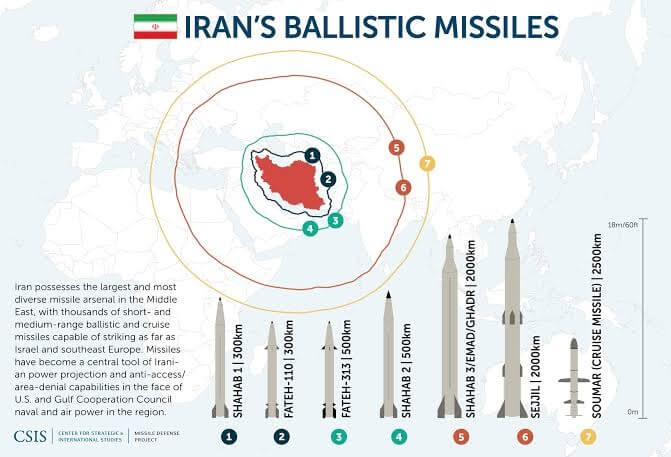Amid the ongoing hostilities between Armenia and Azerbaijan over Nagorno-Karabakh region, Iran recently conducted military drills in the country’s north-western border areas. The air defence war games included infantry, artillery, and armoured units, as well as drone squads.
Air defense fire off missiles during military drills in #Iran pic.twitter.com/cOBLMnQAda
— RT (@RT_com) October 23, 2020
The large-scale drills, codenamed Modafe’an-e Aseman-e Velayat 99 (Guardians of Velayat Sky 99), were aimed at “promoting the combat preparedness and consolidating the air defence capabilities of the Armed Forces in simulated real war conditions.”
During the military exercise, Iran successfully test-fired its indigenous Bavar-373 missile, which reportedly hit its long-range targets.
Watch #Iran successfully test fire #Bavar373 air defense system in final day of the Guardians of Veleyat Skies 99 drills. pic.twitter.com/Vb2RLZpelW
— Iran Military (@Iran_Military) October 22, 2020
The war games were conducted to showcase combat-readiness of Iran after stray missiles and shells made their way into Iranian territory during the ongoing conflict between neighbouring Armenia and Azerbaijan.
Ground Forces Commander Brigadier General Kiomars Heidari said after the exercises that the force had “undergone major changes and turned into an agile offence force with rapid reaction capabilities”.
Warning that the Ground Forces would immediately react to any possible act of aggression against the Islamic Republic, he said the simulated military operations conducted during the war games were to prepare for new combat tactics.
The goal of the war games was to “prevent any encroachment, aggression or encroachment on the country’s air borders,” as per the Iranian military spokesman Abbas Farajpour.
Following the announcement from Commander of the Border Guards of the Islamic Republic of Iran Police Brigadier-General Ahmad Ali Goudarzi on Saturday, the security measures were tightened at the Northwestern bordering areas of the country after several misfire incidents during the Karabakh war.
FarsNews Agency had quoted General Goudarzi as saying that Ranger units, necessary equipment and electronic, optical, drone and reconnaissance systems have been strengthened in these areas.
He was referring to several rounds of mortar which hit the bordering Iranian areas during the Karabakh war in the past few weeks. Tehran has summoned border guards’ authorities of Azerbaijan and Armenia after repeatedly cautioning them about the incidents.
The decades-old Nagorno-Karabakh escalated into a full-blown war on 27 September when Armenia and Azerbaijan accused each other of launching artillery, missile, and airstrikes in the region, resulting in casualties on both the sides.

Earlier this week, the Iranian authorities had warned both the warring sides to avoid crossing Iran’s red lines, stressing that their dispute can be resolved through dialogue.
“The Islamic Republic of Iran, while reinforcing the defensive measures at border areas, stresses that the security of border areas and Iranian people is the country’s red line,” Spokesman for the Iranian Armed Forces Brigadier General Abolfazl Shekarchi said on Friday.
Iran, which has been under the arms embargo for over four decades by the West, has managed to build over 80 percent of indigenous defense equipment. As per the Iranian army, the “country’s skies have been safer than ever” with its domestic air defense equipment.
As Tehran continues to negotiate with Yerevan and Baku to settle their issues through political means, last week it was reported that a rocket fired during clashes between the warring sides landed in a village house in the Northeastern bordering province of East Azarbaijan in Iran.
The rocket damaged the house but did not result in casualties. In another incident a day before, a drone belonging to either of the two sides crashed near the village of Qara Qouch in East Azarbaijan province of Northwestern Iran.
Taking note of the developments in the bordering regions, the Iranian foreign ministry said in a statement, “Movements in the border areas of our country are being seriously and sensitively monitored by the Islamic Republic of Iran, and in this regard, while declaring any attack by any of the warring parties in the region on our country is intolerable, we seriously warn all parties to seriously take care in this regard.”
In an interesting observation on Iran’s war games pattern, Divsallar Abdolrasool, a programme associate at the Middle East Directions Programme and professor at the Graduate School of Universita’ Cattolica (ASERI), has noted that Iran has conducted more military drills in 2020 than its average yearly drills in recent decades.
He highlights how the diversity and frequency of drills have increased; ranging from combined exercises to specific force/task and even international one. Tehran’s long-drawn confrontation with Washington has reduced its capacity to manage internal social pressure while made the system more dependent on military means of defusing threats, which isn’t good for Iran’s rivals, as per Abdolrasool.
He wrote on Twitter – “beyond the show of force or maintaining credible threat, Iranian drills’ pattern in 2020 aimed to incorporate and operationalize a range of capabilities that are growingly seen in Iranian military thoughts as critical capabilities to change US strategic assessment.”




